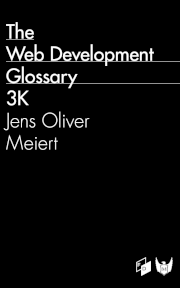CSS: When to Use Logical Properties
Published on November 22, 2019 (↻ May 28, 2021), filed under Web Development (RSS feed for all categories).
Brief thoughts on a more complex matter. Logical properties are great and long overdue. They are great because they solve an ugly problem of international, multi-directional web development in that directionality does not need to affect your writing and managing of CSS anymore.
Example: Write
p {
margin-inline-start: 1rem;
}instead of something (intentionally verbose) like
p {
margin-left: 1rem;
margin-right: 0;
}
[dir='rtl'] p {
margin-left: 0;
margin-right: 1rem;
}But when should you use logical properties?
First, when support is sufficient for your project’s needs.
Then, when that’s the case, there are really two answers:
The reasonable answer: If you actually work with sites or apps with two directionalities. Logical properties may turn into a best practice, but not using logical properties may actually never turn into a bad practice for projects of only one directionality.
The easy answer: If you want to. It’s completely up to you.
All other answers are nonsense, especially when they contain being judged or guilt-tripped by other developers. Logical properties have their particular use in bidirectional environments.
About Me

I’m Jens (long: Jens Oliver Meiert), and I’m a frontend engineering leader and tech author/publisher. I’ve worked as a technical lead for companies like Google and as an engineering manager for companies like Miro, I’m close to W3C and WHATWG, and I write and review books for O’Reilly and Frontend Dogma.
I love trying things, not only in web development (and engineering management), but also in other areas like philosophy. Here on meiert.com I share some of my views and experiences.
If you’d like to do me a favor, interpret charitably (I speak three languages, and they do collide), yet be critical and give feedback for me to fix issues, learn, and improve. Thank you!
Read More
Maybe of interest to you, too:
- Next: On Leadership
- Previous: Website Optimization Measures, Part IX
- More under Web Development
- More from 2019
- Most popular posts
Looking for a way to comment? Comments have been disabled, unfortunately.

Get a good look at web development? Try WebGlossary.info—and The Web Development Glossary 3K (2023). With explanations and definitions for thousands of terms of web development, web design, and related fields, building on Wikipedia as well as MDN Web Docs. Available at Apple Books, Kobo, Google Play Books, and Leanpub.
